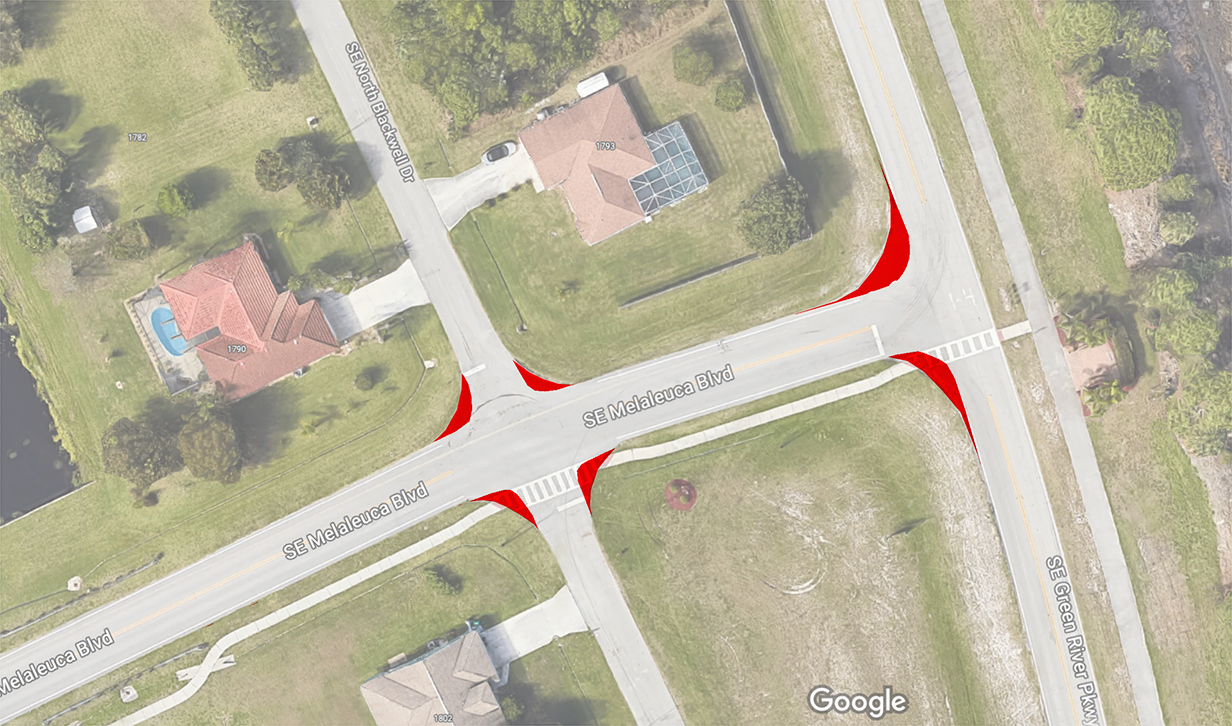Cutting Corners
Sometimes it is OK to cut some corners in your city. This may seem like an odd assertion in a world where we are encouraged to do our best and give 100% in most matters. Why would Strong Towns encourage a community to cut corners?
It turns out that by cutting a few corners, you can actually make your community a better and safer place. Oh, did I mention I meant that literally?
The most complex urbanism of any city can be found at the intersection of two streets. Intersections, and specifically the corners of intersections, are complex transition spaces where all the players in the design and construction of the city have to meet, communicate, and ultimately compromise. Unfortunately, this communication and coordination is often lost in practice.
Getting intersections right provides a lot of opportunity to positively contribute to a community. Through intersection design, we can tackle vehicle speeds, improve pedestrian conditions, provide federally required accommodations under the American for Disabilities Act, add stormwater management, and take back the public realm from the car.
Through poor transportation decisions or unsupervised maintenance, the intersection can become victim to the asphalt truck. The result is a paved corner radius that city officials expand over time to accommodate poor driving behavior, resulting in a downward spiral. These locations are where the streets become wider, the speeds increase, and any semblance of walkability is lost.
The intersection can be saved and converted into an appropriate design with minor attention. In most cases, the intersection can be improved during regular maintenance or scheduled improvements. With the simple removal of pavement, numerous problems can be resolved.
Over time, the above intersection has been widened, which is evident from the cracks and color changes in the pavement. The result is a significant amount of unnecessary pavement. Aerial and street views show where additional pavement has been laid and paved over at the corner, making the radius larger over time.
This next example is a simple, three-way intersection within a residential community. This is an uncomplicated configuration in a relatively flat area. The street includes a single crosswalk connecting the neighborhood to a regional trail. This additional pavement not only is exponentially more costly to maintain, but the layout also creates a crosswalk that is longer for the pedestrian.
This intersection encourages and rewards bad driver behavior—evidenced by the ruts at the intersection, where cars are driving off the pavement. The radius of this intersection is excessive, so the only reason a driver would need to drive off the pavement would be the result of speed. Unsurprisingly, both streets garner regular complaints from residents about high speeds.
A quick overlay shown in red illustrates where the corners could be cut and pavement removed in both of the above examples. This simple subtraction of pavement results in intersections that are properly sized for their respective communities. By reducing the radius of the corners, we can see the following benefits:
Less impervious pavement to maintain.
Shorter pedestrian crossings.
Slower turning speeds, reinforcing the requirement to come to a stop.
Improved sight lines for drivers.
Which intersections could your community improve by simply cutting a few corners?








The driver was operating their vehicle entirely lawfully at this intersection in Grand Junction, CO—yet a person was nearly killed and the driver’s car was totaled. Who do we blame? (And what’s the point of assigning blame?)